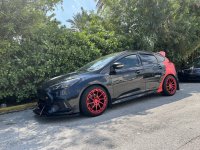GTHound
Active member
thank you for the update WB. I was going to order a 4070 CM today, but curious if I should hold off for a better option. Could you share your thinking on why you are moving away from the TP 4070? Any watch outs? I have a similar sized engine to yours (2.0 liter 4 cylinder and am angling for a similar sized turbo). And which castle creations motor you are switching to? Is it one in the list above or a different model? And what was your rationale for the castle model you selected? if you would be so kind as to indulge us. Thank you!But I changed for a castle creation motor
Last edited:

